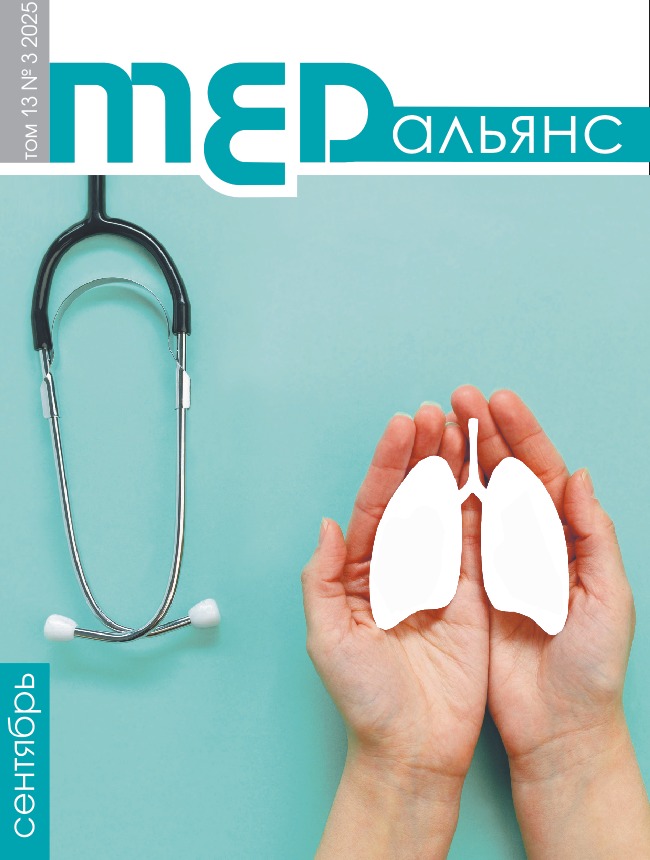Abstract
The aim of the study: to identify key social and clinical determinants that play a role in the occurrence of late relapses of tuberculosis for the subsequent improvement of the effectiveness of preventive measures. Materials and methods of the study. A retrospective analysis of 158 outpatient cards of patients aged 18 to 65 years with tuberculosis was conducted. Patients were divided into 2 groups: group 1 — 66 people with late relapses of respiratory tuberculosis, group 2 — 92 people who completed observation in group 3 without relapse. Information about the first episode of the disease in patients of group 1 was present in 45 cases. The results of the study were processed statistically. Results of the study. Among the patients in the groups, men predominated — 80.3% and 65.2% (p<0.05), aged 41 to 50 years — 40.9% and 41.3% (p>0.05). In group 1, 7.6% of patients had only primary education, higher education was significantly less common — 6.1%, than in group 2 — 1.7% (p<0.05). Patients with relapses more often did not have a family (51.55% versus 28.3%, p<0.05), less often had children (40.9% versus 64.1%, p<0.05). Patients with late relapses of the disease were more often diagnosed with HIV infection (24.2% and 5.4%, p<0.05). Patients with late relapses of the disease more often had bad behavioral habits individually and in combination: smoking (51.5% and 25.0%, p<0.05), smoking and drinking alcohol (13.6% and 1.1%, p<0.05), smoking and using drugs (4.5%). Contact with tuberculosis patients occurred in 62.2% of cases in group 1 and in 14.1% in group 2 (p<0.05). The first episode of the disease in patients with late relapses and without relapses differed little, infiltrative pulmonary tuberculosis was predominant (84.5% and 76.1%, p>0.05), decay was only in 28.9% and 23.9% (p>0.05), while in most cases, during the first episode of tuberculosis in patients with relapses, there were clinical manifestations of the disease in the form of intoxication (84.6% and 20.7%) and bronchopulmonary (85.0% and 25.0%) syndromes (p<0.05), in patients with subsequent late relapses, during the first episode of the disease, bacterial excretion (37.7% and 17.4%, p<0.05) and drug resistance (15.5% versus 3.3%, p<0.05) were more often detected. In patients with late relapses of the disease, adverse reactions developed more often during treatment of the first episode of tuberculosis (24.4% and 6.5%), they more often stopped treatment (22.2% and 5.4%) (p<0.05). Conclusion. Late relapses of tuberculosis were more often observed in men aged 41–50, unmarried and childless. Unfavorable housing conditions, smoking, and abuse of several psychoactive substances were also risk factors. The first episode of tuberculosis was characterized by the presence of established contact with an infected person, a clinical picture with a predominance of intoxication and bronchopulmonary syndromes, destructive changes in the lungs and resistance to drugs, and was noted in patients with concomitant diseases.

